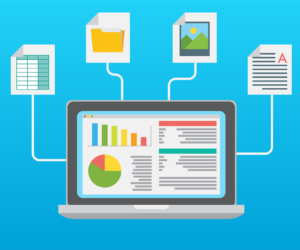What is IDP and why do you need to know about it?
Intelligent Document Processing holds many advantages for businesses across all industries, but understanding what it is and how it works is a vital first step to utilising its advantages. With that in mind, here is everything you need to know about the benefits of IDP for your organisation.
What is IDP?
Many businesses are asking themselves “What is IDP?”, and what it can do to benefit their business productivity and efficiency.
Any business that relies on digital data can benefit from IDP, or Intelligent Document Processing. These solutions transform unstructured and semi-structured information into useable data, offering the next level of automation.
According to recent research, 80% of all business data is embedded in unstructured formats, which include the likes of emails, images, PDFs and business documents. By capturing, extracting and processing this data, IDP uses AI technologies to make sense of business data and bring both clarity and productivity to an organisation.
IDP uses AI technologies such as natural language processing (NLP), deep learning, machine learning and computer vision. Through these technologies, IDP can classify, categorise and extract relevant information and validate the extracted data.
Why is IDP important?
So many businesses fail to recognise just how valuable their data can be when it comes to making a profit and taking their business to new heights, and therefore they allow valuable data information to go to waste. Your business data is a goldmine, and IDP makes all data accessible for business processing, shining a light on what makes your organisation tick.
IDC – International Data Corporation, the premier global market intelligence firm – predicts that by 2025 worldwide data will exceed to an immeasurable 175 zettabytes, which is equal to 175 billion terabytes. What’s more, most of this information is locked in emails, text, PDFs and scanned documents.
Intelligent Document Processing converts unstructured data into something usable – structured information that provides end-to-end automation to document centric business processes. Without IDP on your side, workers will have to manually read and extract data, which takes a huge toll on productivity, efficiency and accuracy.
IDP, like all the best technologies, is successful in its simplicity. Together with RPA-automation processes, IDP offers a simple yet effective tool to automate enterprise business processes. Like RPA, IDP offers tools which are completely non-invasive and integration friendly, making them widely applicable across industries and business functions.
What are the benefits of IDP?
Because IDP is such an innovative and accessible piece of tech, designed to align with the way modern businesses operate, it has numerous advantages which organisations across all industries can benefit from.
IDP can result in direct cost savings for businesses, by reducing business expenses and dramatically cutting costs involved in processing large volumes of data. It also grants businesses with higher straight through processing (STP), which minimises the need for knowledge workers to process documents manually. On top of all this, IDP is also easy to use, allowing businesses to get set up quickly and automate a greater number of processes.
IDP is designed to successfully help businesses process information efficiently. It enables end to end automation of any processes that involve or include documents. It also provides an immediate and significant uplift in data accuracy, thanks to the use of AI. By doing so, it allows businesses to utilise their data, offering the opportunity to make and meet business goals such as improving customer services.
In short, IDP allows you to take your business to the next level, enjoying greater success in the long term.
